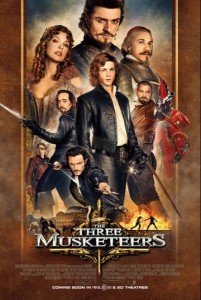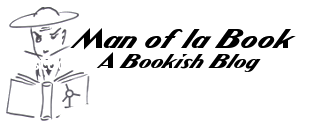The Three Musketeers by Alexandre Dumas has been one of my favorite novels for years, ever since I was a little boy. I’m glad to see that a new movie has been made, movies of famous books always generate interest in the original and get new following. Alexander Dumas based the book on historical events, but also took great liberties. It seems Dumas was more interested in writing good fiction than accurate history. However, those persons who did exist he captured without many grave errors.

1 ) The book is actually a compilation of serialized stories over four months in 1844 for the magazine Le Siècle. That is why each chapter ends with a cliffhanger.
2 ) The book was inspired by another book: Memoires de d’Artagnan by Gatien de Cortilz de Sandras which became the outline for The Three Musketeers. Dumas believed he was reworking another novel and not plagiarizing, to protect himself he claimed that his book is historical. Ironically, Memoires de d’Artagnan is historical.
3 ) The Three Musketeers are Athos, Porthos and Aramis. D’Artagnan does not become a musketeer until the end.
4 ) D’Artagnan is based on Charles de Batz-Castelmore, who also hailed from Gascony and was a distinguished Musketeer under Cardinal Mazarin and Louis XIV.
Porthos is based on Isaac de Porthau, a member of the Captain des Essarts’s company of the King’s Guards.
Henry d’Aramitz related to Monsieur de Treville, and Musketeer from 1640 was the reference for Aramis and Armand de Sillegue, Seigner d’Athos et d’Autevielle, also related to Treville, was who Dumas based Athos on.
5 ) Louis XIII, Anne of Austria, Cardinal Richelieu, and Monsieur de Trevill are all actual historical figures and portrayed somewhat accurately in the book.
6 ) The Three Musketeers is the first part of a trilogy. Together with other books, Twenty Years After and The Vicomte of Bragelonne: Ten Years Later, they are known as the d’Artagnan Romances.
7 ) When The Vicomte de Bragelonne was published in English it was split into three parts: The Vicomte de Bragelonne, Louise de la Valliere, and the most well known The Man in the Iron Mask.
8 ) The 1846 English translation of Les Trois Mousquetaires by William Barrow is still in print today and is said to be very faithful to the original.
9 ) D’Artagnan makes a “guest appearance” in the play Cyrano de Bergerac by Edmond Rostand (Act I Scene IV).
10 ) The motto of the Three Musketeers “”One for all, all for one” (Unus pro omnibus, omnes pro uno) is also Switzerland’s motto.
Purchase:
The Three Musketeers (Amazon | Kindle)
Twenty Years After (Amazon | Kindle)
The Vicomte of Bragelonne: Ten Years Later (Amazon | Kindle)
The d’Artagnan Romances -collected (Amazon | Kindle)
Memoires de d’Artagnan (Amazon}
Zohar – Man of la Book
Related articles
- Movie Review: The Three Musketeers (jowanabueser.wordpress.com)
- Review: The Three Musketeers (1 star) (arts.nationalpost.com)
- ‘The Three Musketeers’: Not one for all (seattletimes.nwsource.com)
- Movie Review: The Three Musketeers (2011) (blogcritics.org)
- Are the three musketeers fictional (wiki.answers.com)


4 Comments
Great post! I haven’t read the novel, but I’m quite intrigued by the new film.
Ooh, I like this Fun Fact Friday thing- great general trivia knowledge 🙂
Lord Sudley, who translated The Three Musketeers, also identified Athos as being Armand de Sillegue, Seigneur d’Athos et d’Autevielle, who was in real life a Musketeer, recorded to have died in a duel in 1643. I know this because I’m a bit obsessed with him as a character. Thanks for this post.
Thank you Jennifer – great website.